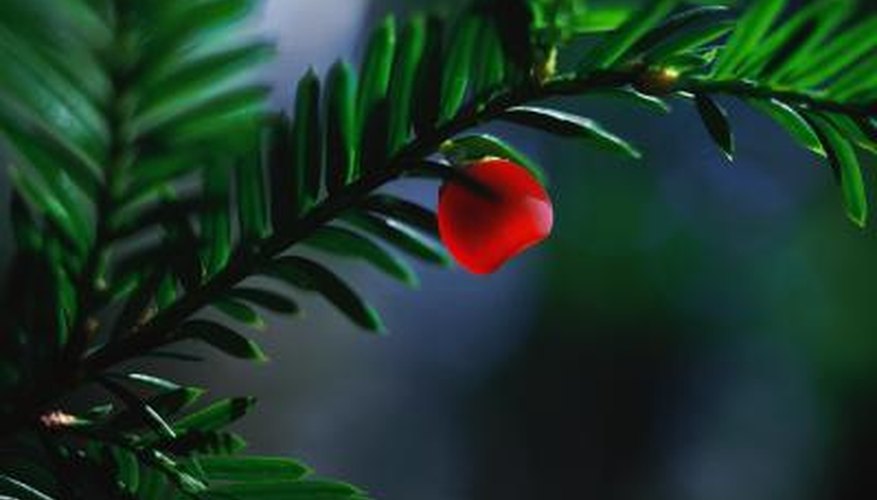Yew trees (Taxus sp.) belong to a large group of plants that also contain shrubs. The coniferous evergreens have dark green needles and are widely used for creating hedges and screens. The female plants produce single-seeded, inedible red berries. Both the foliage and fruit of yews are poisonous. There is often the need to get rid of yew trees on the property. The best way to do this is to kill the tree with the use of herbicide.
- belong to a large group of plants that also contain shrubs.
- The coniferous evergreens have dark green needles and are widely used for creating hedges and screens.
Cut the yet tree down to a stump and make sure that the top surface is level. This will lead to a uniform coverage of herbicide and will minimise runoff. Recommended herbicides include products containing dicamba, glyphosate and imazapyr.
Apply the herbicide immediately to the fresh wood to maximise efficacy of the chemical. If you are not able to treat the stump right away, cut the top surface again to expose fresh wood at the time of herbicide application.
- Cut the yet tree down to a stump and make sure that the top surface is level.
- Apply the herbicide immediately to the fresh wood to maximise efficacy of the chemical.
Saturate the outermost 2 to 3 inches of the stump right next to the bark. This is the cambial layer that will conduct the chemical to the roots. The centre wood of trees with a trunk diameter of over 3 inches is dead heartwood and does not require chemical application.
Cover the entire stump surface with herbicide if the yew tree is 3 inches or less in diameter.
TIP
You can also use soil-applied chemicals like tebuthiuron, hexazinone and bromacil to kill the yew tree. Apply the chemical in a few narrow bands around the tree spaced every 2 to 4 feet. Irrigate well to help the chemical move into the plant roots. All chemicals are sold under different trade names. Use undiluted, water-soluble herbicides for stump treatment, as these have a higher rate of efficacy as compared to esters.
